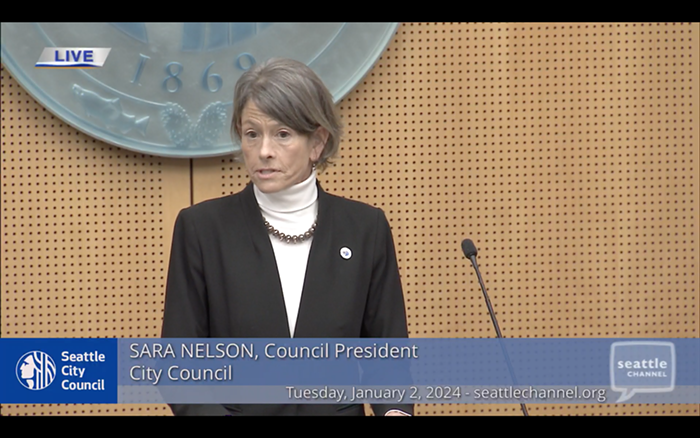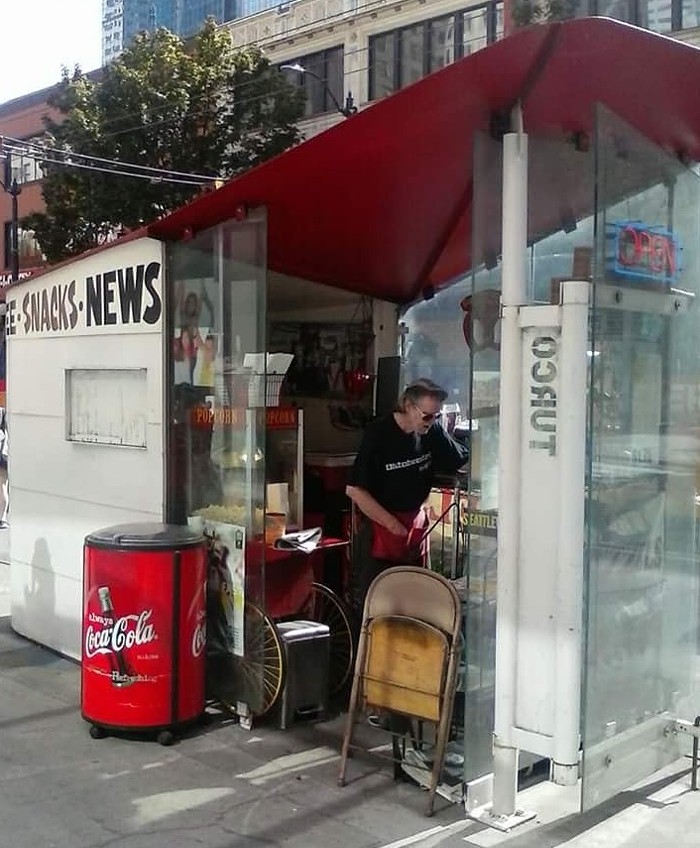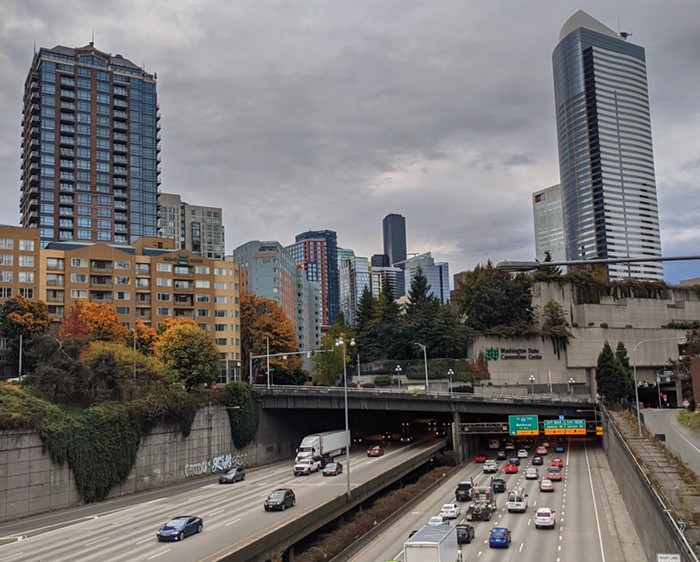
On March 8, Seattle Times's astute real estate reporter Mike Rosenberg wrote that the waterfront area has become the next "gold rush." Big-money investors are moving in and expecting a terrific boom in property values. And so, what we have is something that, despite its origins in public feeling, has the potential of becoming its complete opposite: a site of exclusion. This development would be a dub (echoes) of what's happening right now in the area around New York City's High Line, a Manhattan project that was inspired by public spirit (Friends of the High Line), but upon its completion of its first phase in 2009, was almost immediately captured by a market that has as its logic the rapid and otherworldly inflation of asset values. The similarities between the fate of the High Line and the future of Seattle's Waterfront Project are striking. Rosenberg writes that "even before the Alaskan Way Viaduct finally comes down, the gold rush to cash in on soaring property values in the area is in full swing."
This week is the week for Seattle to think about the Waterfront project—which has already buried billions of dollars—because the first phase of a massive development located at the north end of the High Line, the Hudson Yards, just opened and has stunned the public and critics not with its unrestrained expression of corporate power, but its obvious obscenity. Here we have, without a doubt, a form of city planning that must be described as billionaire urbanism. It's the terminal point of neoliberal urbanism. It's soon coming to Seattle's waterfront.
Cities deserve better than these Thomas Heatherwick gimmicks, @FeargusOSull writes https://t.co/y6nqrIucGx pic.twitter.com/R3DRX91BUV
— CityLab (@CityLab) March 19, 2019
Alan G Brake writes in Dezeen Magazine:
Hudson Yards is not for us, because it is a billionaire's fantasy of the future of city life. Architecture is slow, and Hudson Yards was conceived by the administration of Michael Bloomberg and built by Stephen Ross, the chairman and majority owner of Related Companies.
The two men believed, and apparently still believe, that catering to an ultra-luxury consumer magically benefits everyone. Bloomberg famously said in 2013: "If we could get every billionaire around the world to move here, it would be a godsend."
But the tides have turned. New York is facing a crisis of confidence, its leaders having neglected its infrastructure and its public realm for so long that its basic systems (the subway, the streetscape, subsidised housing) are breaking down. Income inequality has reached levels not seen since the 1920s.
Here's Feargus O'Sullivan of City Lab describing the architect, Thomas "Billionaire Whisperer” Heatherwick, who's behind one of the key works, “Vessel,” of the Hudson Project:
[T]he kind of developments that Heatherwick’s structures brand appear playful but are actually loci for a queasy mix of distraction and surveillance, places that promise cheerful hi-jinx but which enforce consumption-driven regimentation on their users. Look at the Vessel (which some wags have already informally renamed “the Shawarma,” thanks to its resemblance to a spinning meatloaf-cone). Here’s a fun $200 million tower of staircases that invites visitors to clamber—but only under ludicrously strict conditions and control. Like many of his projects, it’s essentially a gaudy monument to being only ever-so-slightly free.
And here is Rosenberg on the waterfront area:
Overall, assessed values of commercial property within a quarter mile of the viaduct have soared 59 percent since 2011, while commercial properties in the rest of the city are up 38 percent in that span, according to an analysis of data from the King County Assessor’s Office. Median sale prices of buildings near the viaduct have also grown about twice as fast as commercial sales in the rest of the city, according to an analysis of sales records provided by CoStar. And rents for both offices and apartments have grown faster near the viaduct than in the rest of the city.
What can all of this mean? Why is it so easy for projects and programs that have as their origin the goal of increasing public spaces become, upon realization, an opportunity to drive property values completely out of the reality of over 90 percent of a city's occupants? Consider even Seattle's Harbor Steps.
A little white setting on the top of Harbor steps let's you know it's time for the Seattle Design Festival #SDF2016 pic.twitter.com/NbR4GvcPL5
— Carisa Marie (@CarisaMarie11) September 16, 2016
It was developed by a civic-minded member of the Bullitt family, the late Stimson Bullitt, over many years. It was inspired by a European sense or ideal of public space. But the Harbor Steps is now the core of some of the most expensive properties in this state, if not the coast. Two-bedroom Harbor Steps apartments were recently listed for $5000. A person even earning $100,000 a year would be unwise to make that kind of commitment alone. And the few with the means to live here comfortably are right next to an area whose egalitarian principles and values are the opposite of those that generate and maintain their wealth. Bullitt wanted something like Rome’s Spanish Steps to be the heart of his mid-sized American city: democratic, popular, and functional. But when these ideas are inserted in a specific urban context, they have the tendency generate social and economic contradictions.
Meaning, the civic passion may create new and important spaces, but it cannot maintain anything like a fidelity to that passion. This is the week for Seattleites to really think about it. Billionaire urbanism is the order of the day. It has dashed even the dreams of market urbanism, which operates under the belief that the problems of affordability can be solved by an authentic, rather than corrupted, application of the laws of supply and demand. But billionaire urbanism is completely alien to these much-trusted laws. It comes from another universe that has values that make no sense for standard earthly existence. Yet, billionaire urbanism is now changing the richest cities in the world, including ours.



















